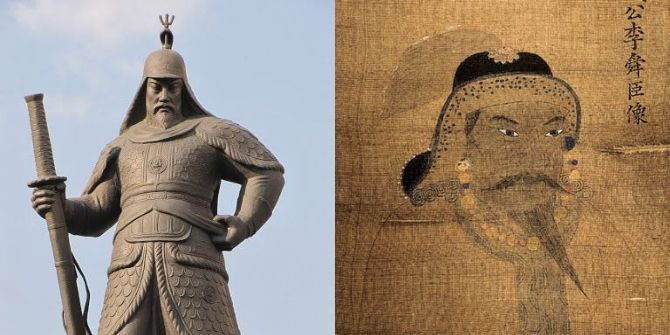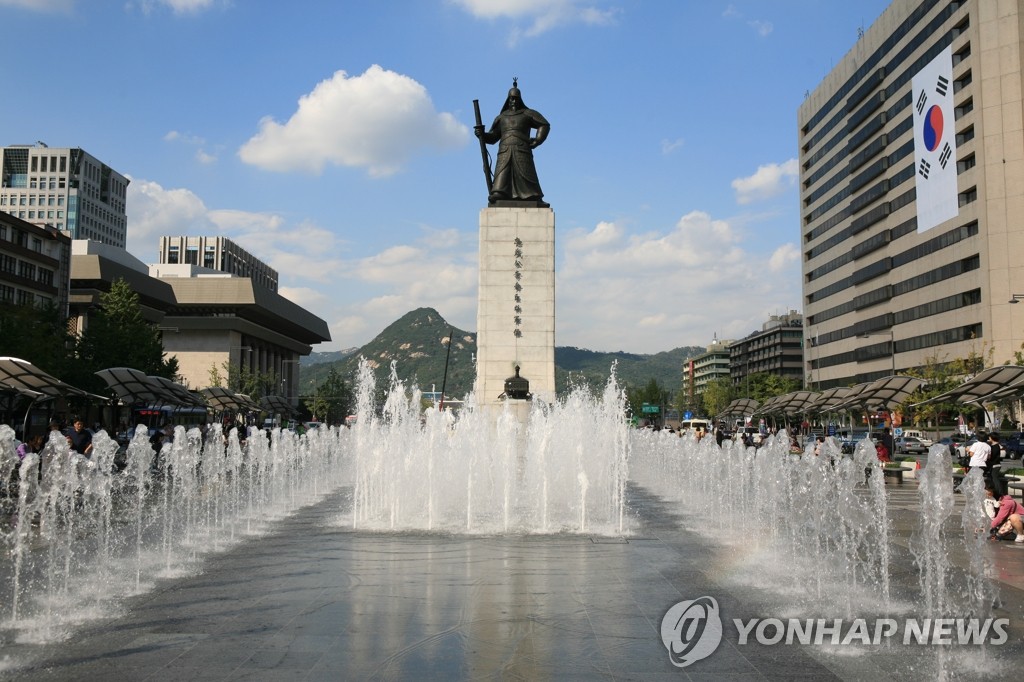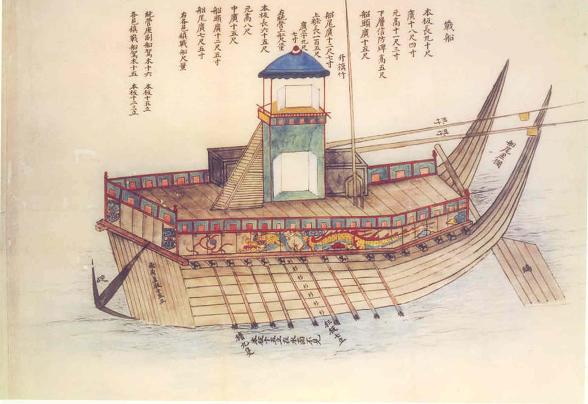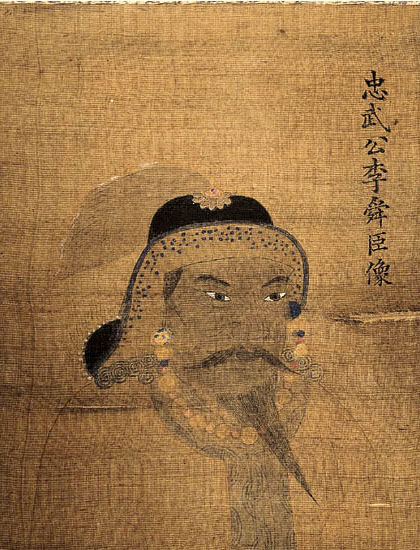Don't Miss the Live Streaming of Online Korean Language Class Part 4, Watch Here!
Don't miss the live streaming of KapanLagi Online Korean Language Class here.

Kapanlagi.com - Besides the statue of King Sejong, there is another statue that is known to stand upright in Gwanghwamun if you go to Korea. The construction of this statue certainly has a reason, how this admiral fought and was able to transform Korea for a better life until the present time.
Admiral Yi Sun Shin was born in Geoncheon-dong, Hanseong (now Inhyeong-dong, Junggu, a district in Seoul), on March 8, 1545. However, due to his family's poor life, he was raised in his mother's hometown in Asan. Before becoming an admiral, Yi Sun Shin initially applied to be a military officer at the age of 28. Unfortunately, he failed the test after falling from his horse. Not stopping there, four years later Yi Sun Shin passed and started his career as a defense soldier at the lowest rank in the northern border area when he was 32 years old.


Warship Panokseon © Daum.net/morukhan
Yi Sun Shin does not have political and economic experience or skills, so it is predicted that he will face many challenges during his military career. He even faced false accusations from his superiors. However, in reality, he was promoted to the commander of the navy in the western part of Jeolla-do province, on the recommendation of Yu Seong Ryong, a high-ranking official and renowned scholar during the Joseon Dynasty.
Yi Sun Shin began building the combat power of the navy because he predicted that war against Japan was inevitable. He tightened discipline among the troops, expanded weaponry, and produced strong defensive weapons, including the warships Geobukseon and Panokseon, as well as the firearms Jija and Hyeonja Chongtong.
The warship Geobukseon was crucial as the spearhead of the Korean Navy. This mighty warship was able to fire cannons in all directions with a round roof covered in spikes to effectively prevent Japanese soldiers from boarding.
As reported by Voluntary Agency Network of Korea (VANK), in the war diary written by Admiral Yi, Lieutenant Na Dae Yong completed the construction of the warship Geobukseon and tested the firearms Jija and Hyeonja Chongtong on April 12, 1592, one day before the outbreak of the Imjin War (1592-1598).
As predicted, on April 13, 1592, the Imjin War broke out. Hundreds of thousands of Japanese soldiers attacked Korea, which was unprepared for war at that time. Yi analyzed the war situation thoroughly after the outbreak of the war, and went to battle on May 4, 1592, fully prepared. Admiral Yi Sun Shin defeated the Japanese forces by destroying 42 Japanese ships in the naval battles of Okpo, Happo, and Jeokjinpo. He continued to achieve consecutive victories in the battles of Dangpo and Danghangpo in June, the battles of Hansando and Angolpo in July, and throughout the Battle of Busan in September.
The extraordinary victories of Admiral Yi's navy fleet boosted the morale of the Korean Navy and made Korea dominate the southern coast. Yi defeated the previously advancing Japanese forces to the north through Seoul and Pyongyang, attacking from the sea and land. Yi's naval victories changed the tide of the war against Japan.
Among all his victories, the Great Battle of Hansando is not only considered one of Yi's greatest battles, but also one of the four greatest naval battles in the world along with the Battle of Salamis (480 BC), the Battle of Calais (1588), and the Battle of Trafalgar (1805). Victory at Hansando proved the superiority of Korean firearms and warships, as well as the brilliance of Yi as a naval commander in the use of his navy's creative tactics called 'Hagikjin' or crane wing formation.
On August 15, 1593, Yi was appointed as the Commander of the Southern Navy (Samdo Sugun Tongjesa in Korean) in recognition of his outstanding service during the war. During this time, the Japanese forces were trapped in a difficult situation due to the consecutive victories of the Korean Navy, the emergence of Korean militias or reserve military forces (uibyeong in Korean), and the intervention of the Chinese Army.
This forced Japan to have no choice but to initiate boring peace talks with Ming China that lasted for 45 months. The peace talks did not include Korea due to Korea's opposition to peace negotiations with the Japanese invaders.

Admiral Yi Sun Shin © Wikipedia
During this period, Admiral Yi Sun Shin continued his best efforts to improve the combat strength of the Korean Navy by recruiting and training soldiers, building weapons and warships, ordering gunpowder, and securing supplies. Not only that, he also conducted naval operations under unfavorable infectious disease conditions and supply shortages.
According to his war diary in March 1594, Yi Sun Shin himself suffered from an illness. Admiral Yi ordered the war despite his sick body. In addition, he managed to obtain a large amount of food for the war by managing a land called Dunjeon, fishing, and producing salt, which proved his famous management skills.
(kpl/mit)
Cobain For You Page (FYP) Yang kamu suka ada di sini,
lihat isinya
Don't miss the live streaming of KapanLagi Online Korean Language Class here.
How to use Zoom for KapanLagi Online Korean Language Class part 4.
Let's register for Part 4 of the Free Online Korean Language Class with KapanLagi! There are also many giveaways waiting~
Ppalli Ppalli culture in Korea, a life that is always chased by time and everything has to be fast.
Curious about what tips and interesting information Bandung Oppa will share, right?
It turns out that living conveniently and comfortably requires patience. This is my story of living in Korea.
My efforts to become fluent in Korean were long and challenging, but every moment was enjoyable. Like this moment when I was learning Korean during high school in Korea.
Korean Story from Irfan Rulianto - culture shock when first becoming a high school student in Korea because of the learning system that is similar to the drama story.
What's on the menu?
Despite being weird, these are actually the things that make K-POP different from other music fandoms.
Although forbidden, it turns out many famous K-Pop idols have violated this rule during their trainee period.
Having a very far difference in fashion style. Let's take a look at some unique fashion differences from South Korea and North Korea. What are they? Let's check it out right away.